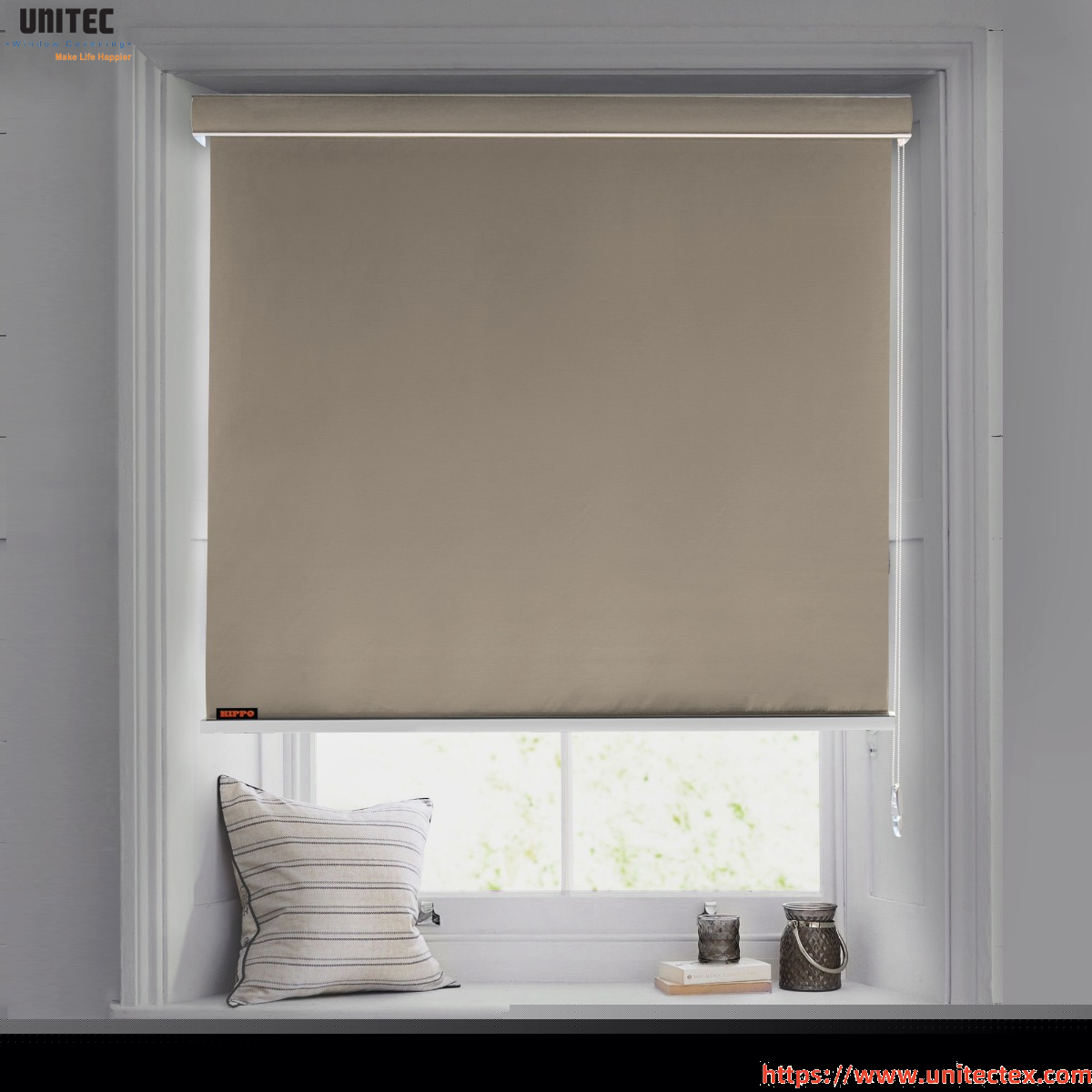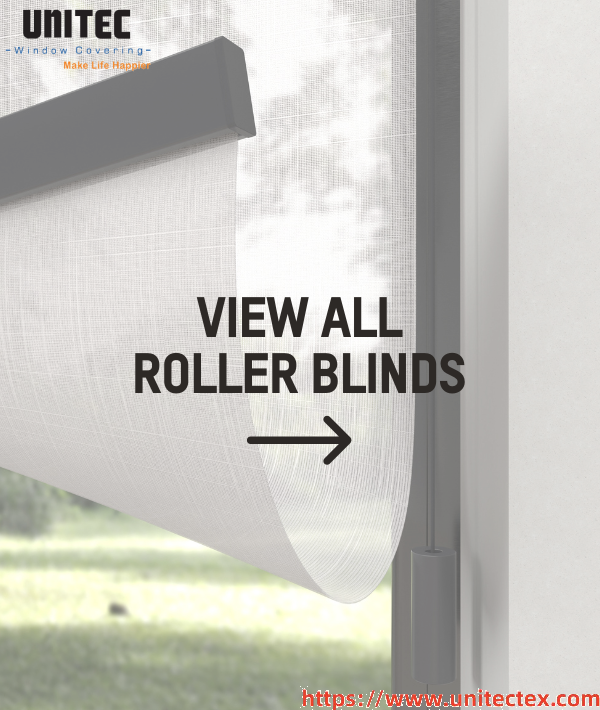
1. Why “Light-Blocking” Is a Scientific Challenge, Not Just a Fabric Choice
Total darkness requires controlling direct light, diffuse light, and reflective light pathways. Ordinary blinds fail because:
-
Fabric translucency allows a portion of visible light (380–780 nm) to pass through.
-
Side gaps around the blind edges enable lateral light leakage.
-
Reflective surfaces inside the room scatter residual light.
Superior light-blocking roller blinds address all three mechanisms using:
-
Opaque multi-layer coatings (often acrylic or foam-based)
-
High-density polyester substrates
-
Jacquard or tightly woven structures
-
Optional side channels or cassette systems
The result is a system that behaves as a barrier to photon transmission, reducing visible light penetration to 0% or near-zero levels, a requirement for environments like photography studios, laboratories, or shift-worker bedrooms.

2. Material Engineering: How Blackout Fabrics Achieve 100% Light Obstruction
2.1 Multi-Layer Coating Technology
Superior blackout roller blinds typically use:
-
Three-layer acrylic foam coatings
-
Nano-pigmented light-absorbing layers
-
Heat-fused barrier layers
These layers prevent photons from penetrating the fabric. Instead of scattering light, the coatings absorb and convert light energy into low-level thermal energy, a process similar to matte optical coatings in scientific instruments.
2.2 Polymer Structure and Opacity
The fabric substrate—usually 100% polyester—is engineered for:
-
High thread density, reducing micro-perforations.
-
Dimensional stability, preventing warp-induced gaps.
-
Low translucency, even without coatings.
The polyester + acrylic system produces an opaque matrix with no paths for visible light transmission.

3. Superior Light-Blocking Blinds and Thermal Regulation: A Heat-Transfer Perspective
Blackout roller blinds also influence thermal dynamics through conduction, convection, and radiation control.
3.1 Reduction of Solar Heat Gain
Visible and infrared solar radiation contribute to interior heat buildup. Superior blackout blinds:
-
Absorb and block up to 100% of UV radiation
-
Minimize short-wave radiation penetration
-
Reduce solar heat gain coefficient (SHGC)
In laboratory conditions, performance-grade blackout blinds can lower indoor temperature increases by 3–8°C, depending on window orientation and climate.
3.2 Improved Thermal Insulation
The fabric’s thickness (often 0.4–0.7 mm) and foam layers trap micro air pockets, adding an insulating effect.
This translates to:
-
Lower HVAC loads
-
Reduced thermal bridging
-
More stable indoor environments
For commercial buildings, this results in measurable energy savings, making blackout blinds part of sustainable design strategies.

4. Visual Ergonomics: Why Complete Darkness Matters
Superior light-blocking roller blinds dramatically improve visual comfort, which directly affects human cognition, circadian rhythms, and task performance.
4.1 Circadian Rhythm Optimization
Exposure to even low levels of artificial or natural light at night (as low as 10–15 lux) can disrupt:
-
Melatonin production
-
Sleep duration
-
Sleep efficiency
-
Hormonal balance
Superior blackout blinds ensure true darkness, which scientists have linked to improved sleep and recovery—critical for shift workers, children, or those with light sensitivity.
4.2 Digital and Optical Performance
Professional environments benefit from darkness:
-
Home theaters: Prevent ambient light washout on screens.
-
Medical imaging rooms: Reduce screen glare and improve diagnostic accuracy.
-
Design studios: Improve color fidelity by eliminating external light interference.
-
Photography studios: Allow controlled lighting environments.
Visual ergonomics is a scientific requirement, not a luxury.
5. Acoustic Benefits: The Often Overlooked Advantage
Although blackout roller blinds are not acoustic panels, the dense, multi-layer fabric structure provides measurable sound absorption in mid-frequency ranges (500–2,000 Hz).
Research shows:
-
Up to 15–25% reduction in reflective sound energy
-
Smoother acoustic profiles in small and medium-sized rooms
This benefit supports:
-
Office environments
-
Educational institutions
-
Home theaters
-
Apartments in noisy areas
Light control and sound control often go hand in hand in premium building design.
For more information about curtains, please follow us and contact us
Post time: Nov-14-2025




